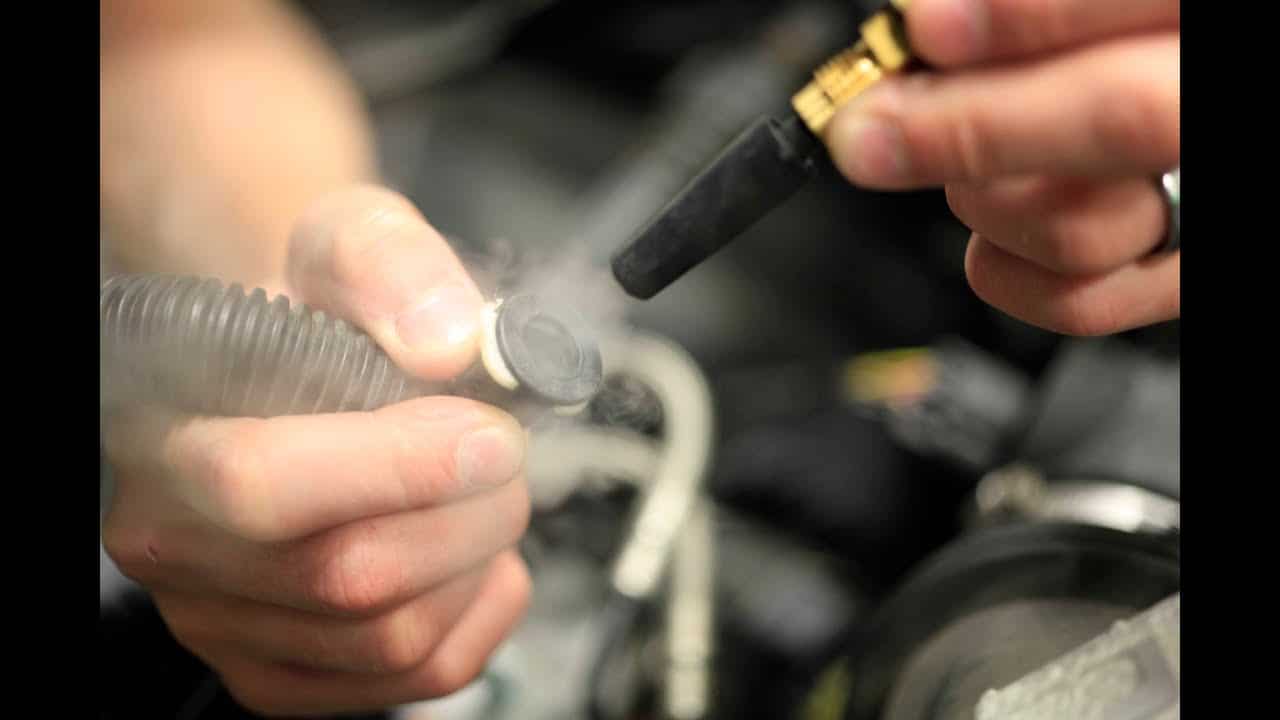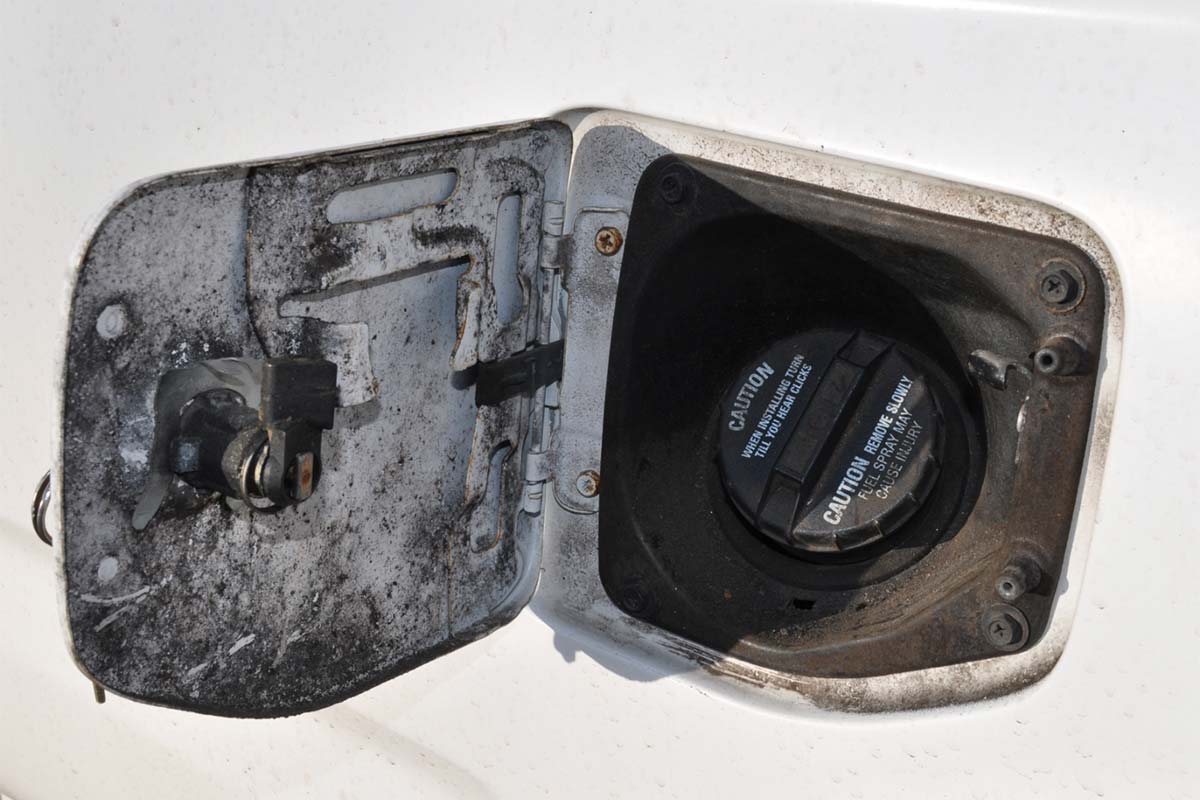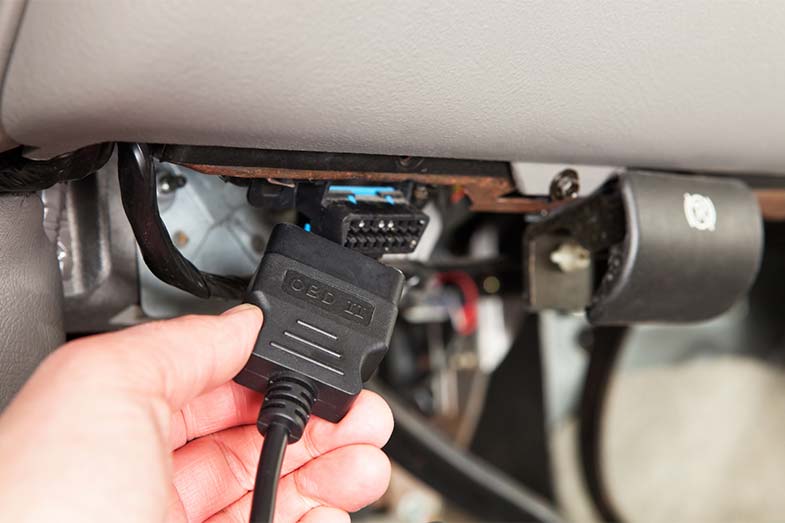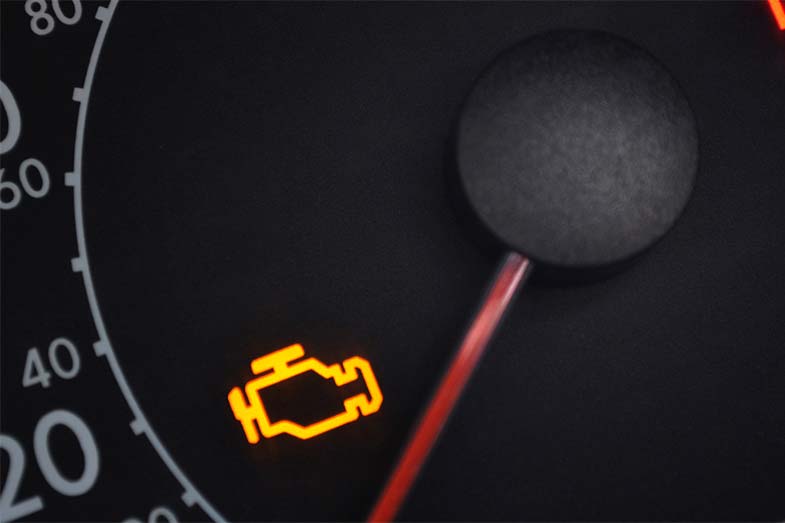How To Resolve The P0455 Diagnostic Trouble Code In Your Jeep
"How To Fix Jeep P0455 Diagnostic Trouble" is a concise guide that offers comprehensive solutions for addressing the P0455 code in Jeep vehicles. This code indicates issues within the evaporative emission control (EVAP) system, which plays a critical role in reducing harmful pollutants.
Understanding and resolving the P0455 code is crucial for maintaining optimal vehicle performance, preventing excessive emissions, and ensuring compliance with environmental regulations. Historically, EVAP systems have evolved significantly, with the introduction of advanced sensors and diagnostic capabilities that enhance their accuracy and effectiveness.
This article will delve into the causes and symptoms of the P0455 code in Jeep vehicles, providing a systematic approach to troubleshooting and resolving the issue.
How To Fix Jeep P0455 Diagnostic Trouble
Addressing the P0455 diagnostic trouble code in Jeep vehicles requires a comprehensive understanding of its key aspects. These include:
- Fault code definition
- Causes
- Symptoms
- Diagnostic tools
- Repair procedures
- EVAP system components
- Safety precautions
- Environmental regulations
- Troubleshooting tips
- Code clearing
Each of these aspects plays a crucial role in effectively resolving the P0455 code. Misdiagnosing the fault or overlooking important details can lead to incorrect repairs, increased emissions, and potential harm to the environment. By thoroughly understanding these key aspects, technicians and vehicle owners can systematically approach the issue and restore optimal performance to their Jeep.
Fault code definition
Within the context of "How To Fix Jeep P0455 Diagnostic Trouble", fault code definition holds significant importance as it provides a precise explanation of the P0455 code, its causes, potential symptoms, and implications. Understanding the fault code definition is a foundational step in effectively troubleshooting and resolving the issue.
- Code description
The P0455 code indicates a malfunction within the Jeep's evaporative emission control (EVAP) system, specifically a large leak detected.
- Causes
Various components and factors can contribute to the P0455 code, including a faulty gas cap, damaged EVAP lines or hoses, a malfunctioning purge valve, or a defective fuel tank pressure sensor.
- Symptoms
Vehicles with the P0455 code may exhibit symptoms such as a check engine light, increased fuel consumption, rough idling, or difficulty starting.
- Environmental impact
The P0455 code is related to the EVAP system, which plays a vital role in reducing harmful emissions released into the atmosphere. Resolving this code ensures the vehicle operates within environmental regulations and minimizes its impact on air quality.
Understanding the fault code definition for P0455 empowers technicians and vehicle owners with the knowledge necessary to diagnose and address the underlying issue effectively. It serves as a roadmap for further troubleshooting, guiding them towards the most likely causes and potential solutions.
Causes
Identifying the causes of the P0455 diagnostic trouble code in Jeep vehicles is crucial for effective troubleshooting and repair. Various factors can contribute to this code, ranging from faulty components to external influences:
- Faulty gas cap
A loose or damaged gas cap can allow fuel vapors to escape, triggering the P0455 code. Replacing the gas cap with a new one is often a simple and inexpensive solution.
- Damaged EVAP lines or hoses
Cracks or breaks in the EVAP lines or hoses can also cause fuel vapors to leak, leading to the P0455 code. A thorough inspection of these components is necessary to identify any damage.
- Malfunctioning purge valve
The purge valve controls the flow of fuel vapors from the EVAP canister to the engine. A faulty purge valve can prevent the system from operating correctly, resulting in the P0455 code.
- Defective fuel tank pressure sensor
The fuel tank pressure sensor monitors the pressure inside the fuel tank. If the sensor fails, it can provide inaccurate readings, causing the EVAP system to malfunction andtriggering the P0455 code.
Understanding the potential causes of the P0455 code allows technicians and vehicle owners to focus their efforts on the most likely culprits. By addressing these causes systematically, they can effectively resolve the issue and restore optimal performance to their Jeep.
Symptoms
Understanding the symptoms associated with the P0455 diagnostic trouble code in Jeep vehicles is crucial for timely and effective troubleshooting. These symptoms manifest in various ways, providing valuable clues to the underlying issue.
- Check engine light
The illumination of the check engine light is a common symptom of the P0455 code. It indicates that the vehicle's onboard diagnostic system has detected a malfunction within the EVAP system.
- Increased fuel consumption
A faulty EVAP system can lead to increased fuel consumption as fuel vapors are not properly captured and recycled. This symptom can be noticeable during regular driving or when the vehicle is idling.
- Rough idling
The EVAP system plays a role in maintaining stable engine idle. A malfunctioning EVAP system can cause rough idling, characterized by fluctuations in engine speed or stalling.
- Difficulty starting
In severe cases, a faulty EVAP system can make it difficult to start the vehicle. This symptom is often accompanied by other noticeable issues, such as a strong fuel odor or engine misfires.
Recognizing and interpreting these symptoms is essential for vehicle owners and technicians alike. By paying attention to these signs and understanding their implications, they can take prompt action to diagnose and resolve the underlying problem, ensuring optimal performance and minimizing the risk of further damage.
Diagnostic tools
In the context of "How To Fix Jeep P0455 Diagnostic Trouble", diagnostic tools play a pivotal role in identifying and resolving the underlying issues associated with the P0455 diagnostic trouble code. These tools provide technicians and vehicle owners with the means to accurately assess the condition of various components within the EVAP system, enabling them to pinpoint the root cause of the problem and implement effective repairs.
- Code readers
Code readers are handheld devices that connect to the vehicle's onboard diagnostic port and retrieve stored diagnostic trouble codes. These codes provide valuable insights into the nature of the issue, guiding technicians towards potential causes and repair procedures.
- Scanners
Scanners offer more advanced capabilities compared to code readers. They not only retrieve diagnostic trouble codes but also allow technicians to view live data from various sensors and modules within the vehicle. This real-time data can be instrumental in identifying intermittent issues and monitoring system performance during repairs.
- Smoke machines
Smoke machines are used to detect leaks within the EVAP system. By introducing a non-toxic smoke into the system, technicians can visually inspect for any escaping smoke, indicating the location of the leak.
- Pressure gauges
Pressure gauges measure the pressure within the fuel tank and EVAP system. This information can be crucial in diagnosing issues related to the fuel tank pressure sensor or other components that regulate pressure within the system.
The effective use of diagnostic tools is essential for accurate troubleshooting and repair of the P0455 diagnostic trouble code in Jeep vehicles. These tools empower technicians with the ability to gather critical data, pinpoint the root cause of the issue, and make informed decisions regarding the necessary repairs. By leveraging the capabilities of these tools, vehicle owners can ensure that their Jeep's EVAP system operates efficiently, minimizing emissions and maintaining optimal performance.
Repair procedures
Repair procedures form the cornerstone of effectively resolving the P0455 diagnostic trouble code in Jeep vehicles. By understanding the intricacies of these procedures, technicians can systematically address the underlying issues, restore optimal performance, and ensure compliance with environmental regulations.
- Component replacement
Replacing faulty components, such as the gas cap, EVAP lines, purge valve, or fuel tank pressure sensor, is a common repair procedure. Identifying the defective component through thorough diagnosis is crucial to ensure effective repairs.
- Leak sealing
Sealing leaks in the EVAP system is essential to prevent fuel vapors from escaping. This involves inspecting and repairing any cracks or breaks in EVAP lines, hoses, or other system components.
- System reset
Resetting the EVAP system after repairs or component replacements is necessary to clear any stored fault codes and allow the system to re-initialize. This ensures proper operation and accurate monitoring of the EVAP system.
- Performance verification
Verifying the performance of the repaired EVAP system is crucial to ensure the issue has been resolved. This involves using diagnostic tools to monitor system parameters and confirm that the repairs have been successful.
Understanding the various aspects of repair procedures empowers technicians with the knowledge and skills necessary to effectively address the P0455 diagnostic trouble code in Jeep vehicles. By following proper procedures, utilizing appropriate tools, and adhering to safety guidelines, technicians can restore optimal performance, minimize environmental impact, and ensure the longevity of the vehicle's EVAP system.
EVAP system components
EVAP system components play a crucial role in resolving the P0455 diagnostic trouble code in Jeep vehicles. The EVAP system is designed to capture and control fuel vapors, preventing their release into the atmosphere. When a component within this system malfunctions or fails, it can lead to the P0455 code. Understanding the relationship between EVAP system components and the P0455 code is essential for effective troubleshooting and repairs.
Key EVAP system components that are commonly associated with the P0455 code include the gas cap, EVAP lines and hoses, purge valve, and fuel tank pressure sensor. A loose or damaged gas cap can allow fuel vapors to escape, triggering the P0455 code. Similarly, cracks or breaks in EVAP lines or hoses can also cause fuel vapor leaks, leading to the same code. A malfunctioning purge valve can prevent the proper flow of fuel vapors, resulting in the P0455 code. Additionally, a defective fuel tank pressure sensor can provide inaccurate readings, causing the EVAP system to malfunction and triggering the P0455 code.
Diagnosing and repairing the P0455 code requires a thorough understanding of the EVAP system components and their functions. By identifying the faulty component and implementing appropriate repairs, technicians can effectively resolve the issue and restore optimal performance of the EVAP system. In summary, EVAP system components are critical elements in understanding and resolving the P0455 diagnostic trouble code in Jeep vehicles. Proper diagnosis, repair, and maintenance of these components ensure the efficient operation of the EVAP system, minimizing environmental impact and maintaining vehicle performance.
Safety precautions
When troubleshooting and repairing the P0455 diagnostic trouble code in Jeep vehicles, adhering to proper safety precautions is paramount. Overlooking these precautions can pose risks to the technician, the vehicle, and the environment. Understanding and implementing these safety measures are essential for ensuring a safe and successful repair process.
- Personal protective equipment
Wearing appropriate personal protective equipment (PPE), such as gloves, safety glasses, and a respirator, is crucial to protect against exposure to hazardous substances, such as fuel vapors and cleaning agents.
- Fire prevention
Fuel vapors are highly flammable. Keep all ignition sources away from the work area, ensure proper ventilation, and have a fire extinguisher readily available in case of emergencies.
- Electrical safety
Disconnect the vehicle's battery before performing any electrical work to prevent electrical shocks and potential damage to electrical components.
- Environmental protection
Dispose of any replaced components and fluids, such as fuel filters and cleaning agents, in an environmentally responsible manner according to local regulations.
By observing these safety precautions and maintaining a safety-conscious mindset throughout the repair process, technicians can effectively address the P0455 code while minimizing risks to themselves, the vehicle, and the surrounding environment.
Environmental regulations
Within the context of "How To Fix Jeep P0455 Diagnostic Trouble", environmental regulations play a critical role in shaping the approach to troubleshooting and repair. These regulations aim to minimize the negative impact of vehicles on the environment, particularly regarding emissions. The P0455 code specifically relates to a large leak detected within the evaporative emission control (EVAP) system, which is designed to capture and control fuel vapors to prevent their release into the atmosphere.
Adhering to environmental regulations is not only a legal obligation but also an ethical responsibility. By understanding and complying with these regulations, technicians can contribute to reducing air pollution and preserving the environment for future generations. Moreover, staying updated with evolving environmental regulations ensures that repair practices align with the latest standards and best practices.
Real-life examples of environmental regulations within "How To Fix Jeep P0455 Diagnostic Trouble" include emission testing requirements and vehicle inspection standards. These regulations mandate that vehicles meet certain emissions thresholds to be deemed roadworthy. By ensuring that the EVAP system is functioning correctly and addressing the P0455 code, technicians help ensure that Jeep vehicles comply with these regulations and minimize their environmental impact.
In summary, understanding the connection between environmental regulations and "How To Fix Jeep P0455 Diagnostic Trouble" is crucial for responsible and effective repairs. By adhering to these regulations, technicians play a vital role in protecting the environment and ensuring that vehicles operate within acceptable emissions limits. Continuously staying informed about environmental regulations and incorporating them into repair practices demonstrates a commitment to sustainability and ethical responsibility within the automotive industry.
Troubleshooting tips
When it comes to understanding "How To Fix Jeep P0455 Diagnostic Trouble", troubleshooting tips play a pivotal role in guiding technicians towards effective repairs. These tips provide practical insights and proven methods for identifying the root cause of the P0455 code and implementing appropriate solutions. By leveraging troubleshooting tips, technicians can systematically eliminate potential causes, narrow down the source of the issue, and develop a targeted repair strategy.
Real-life examples of troubleshooting tips within "How To Fix Jeep P0455 Diagnostic Trouble" include using a smoke machine to detect leaks in the EVAP system, monitoring live data from sensors using a scan tool to assess system performance, and performing pressure tests to evaluate the integrity of the fuel tank and EVAP components. These tips empower technicians with actionable steps to pinpoint the underlying cause of the P0455 code, avoiding unnecessary part replacements and ensuring efficient repairs.
Understanding the practical applications of troubleshooting tips is crucial for technicians seeking to effectively address the P0455 code in Jeep vehicles. By applying these tips, technicians can increase their diagnostic accuracy, reduce repair time, and enhance overall customer satisfaction. Moreover, troubleshooting tips promote a proactive approach to vehicle maintenance, enabling technicians to identify potential issues before they escalate into more significant problems.
In summary, troubleshooting tips are an indispensable component of "How To Fix Jeep P0455 Diagnostic Trouble". They provide a structured approach to diagnosing and resolving the P0455 code, ensuring accurate repairs and optimal vehicle performance. By embracing these tips, technicians not only demonstrate their expertise but also contribute to the longevity and reliability of Jeep vehicles.
Code clearing
Within the context of "How To Fix Jeep P0455 Diagnostic Trouble", code clearing holds significant importance as a crucial step in the diagnostic and repair process. When the P0455 code appears, indicating a large leak in the EVAP system, simply clearing the code without addressing the underlying issue may lead to a recurring problem and potentially mask more severe issues.
Code clearing involves using a scan tool to erase the P0455 code from the vehicle's onboard computer. While this may temporarily turn off the check engine light, it does not resolve the actual problem causing the code to appear. If the underlying issue is not identified and repaired, the code will likely reappear, and the vehicle may continue to experience performance problems or fail emissions tests.
Real-life examples of code clearing within "How To Fix Jeep P0455 Diagnostic Trouble" include situations where a loose gas cap is the cause of the code. Simply tightening the gas cap and clearing the code may temporarily resolve the issue, but if the gas cap is not replaced or properly secured, the code will likely reappear. Another example involves a faulty purge valve, which requires replacement to permanently address the P0455 code; clearing the code alone will not resolve the issue and may lead to further problems.
Understanding the practical applications of code clearing is crucial for technicians and vehicle owners alike. While it may seem like a quick fix, code clearing without proper diagnosis and repair can lead to more significant problems and costly repairs in the long run. By addressing the underlying cause of the P0455 code and clearing it only after the issue has been resolved, technicians can effectively restore the vehicle's performance, ensure compliance with emissions regulations, and provide peace of mind to vehicle owners.
In conclusion, effectively addressing the P0455 diagnostic trouble code in Jeep vehicles demands a comprehensive understanding of its underlying causes, symptoms, and repair procedures. This article has explored the various aspects of this issue, providing a structured approach to troubleshooting and resolving the code. By leveraging diagnostic tools, understanding EVAP system components, and adhering to safety precautions, technicians can efficiently identify and repair the root cause of the P0455 code.
Key takeaways from this exploration include the importance of accurate diagnosis, considering environmental regulations, and the proper application of troubleshooting tips. Each of these elements plays a pivotal role in ensuring effective and long-lasting repairs. Ignoring or overlooking any aspect of this process can lead to recurring issues, increased emissions, and potential harm to the environment. By embracing a holistic approach to "How To Fix Jeep P0455 Diagnostic Trouble," technicians empower themselves to deliver exceptional service, enhance customer satisfaction, and contribute to a cleaner and more sustainable automotive landscape.
Unveiling Cillian Murphy's Net Worth: How Rich Is The Acclaimed Actor?
Miya Ponsetto: False Accusation And Racial Bias
4.2 Magnitude Tremor Jolts Residents: What To Know And Do

Código De Diagnóstico P0455 Para Jeep Liberty ¿Cómo Repararlo

P0455 Jeep Code EVAP Large Leak (Symptoms & Fix) OffRoading Pro

Descubrir 81+ imagen jeep wrangler p0455 code Ecover.mx

P0455 Jeep Wrangler Meaning, Causes, Symptoms & Fix Vehicolic

Total 98+ imagen jeep wrangler code p0455 Abzlocal.mx
ncG1vNJzZmirmaHDpnrApqpsZpSetKrAwKWmnJ2Ro8CxrcKeqmebn6J8qbvWZquoZZaexW62xJ6nZqhgaYJ2ecOimKCmn6jBqq%2BMramorZKhsm%2B006aj